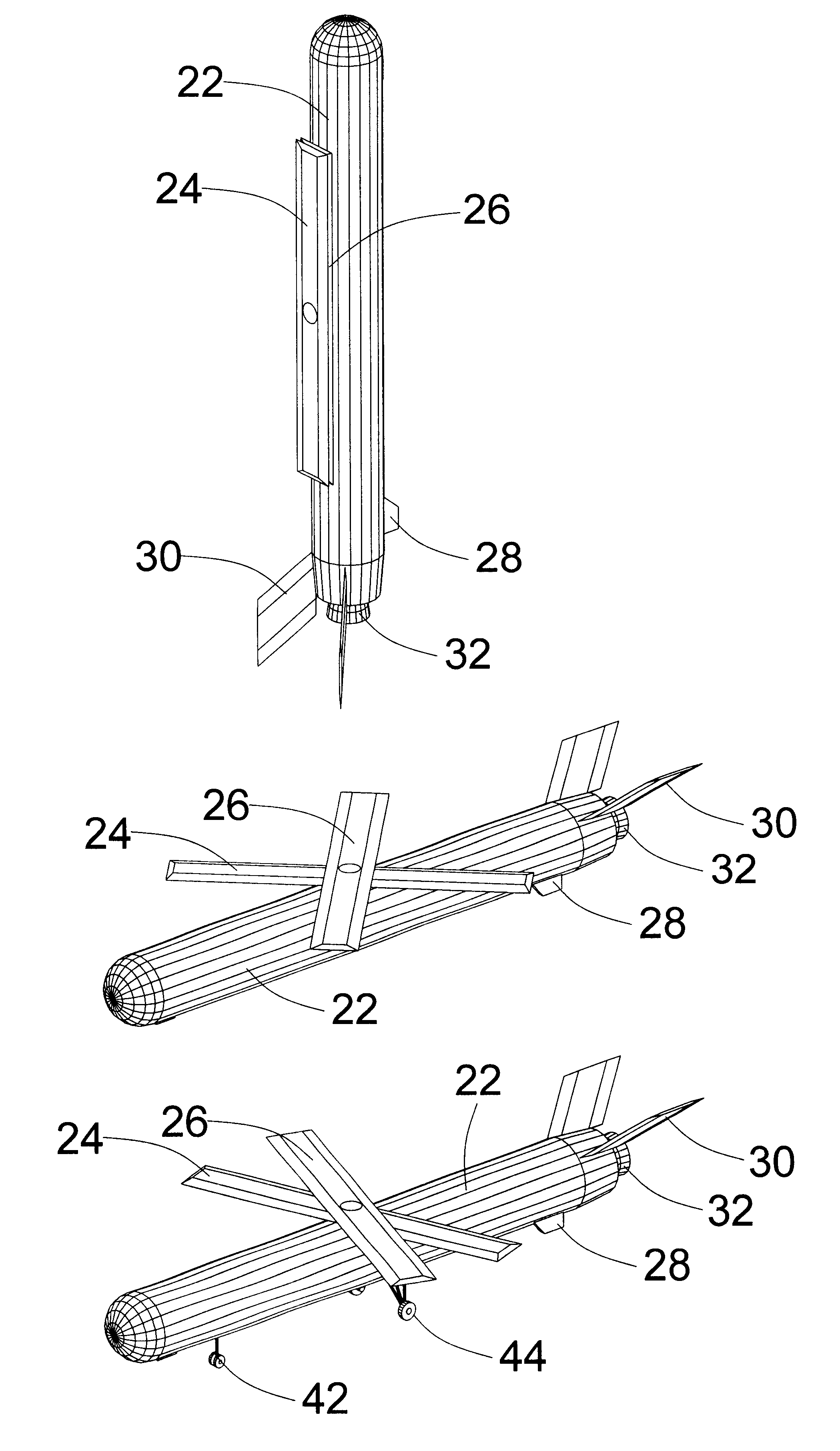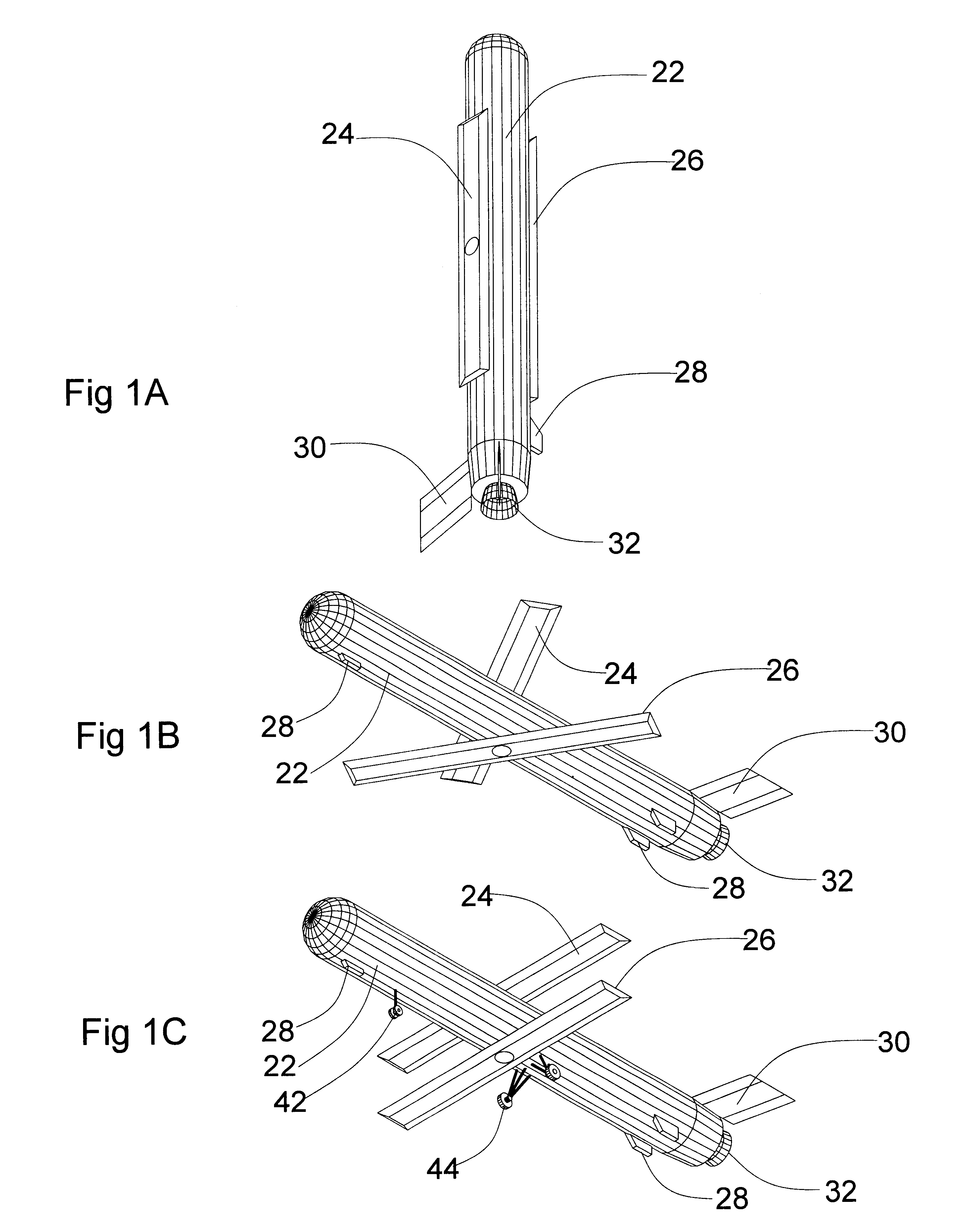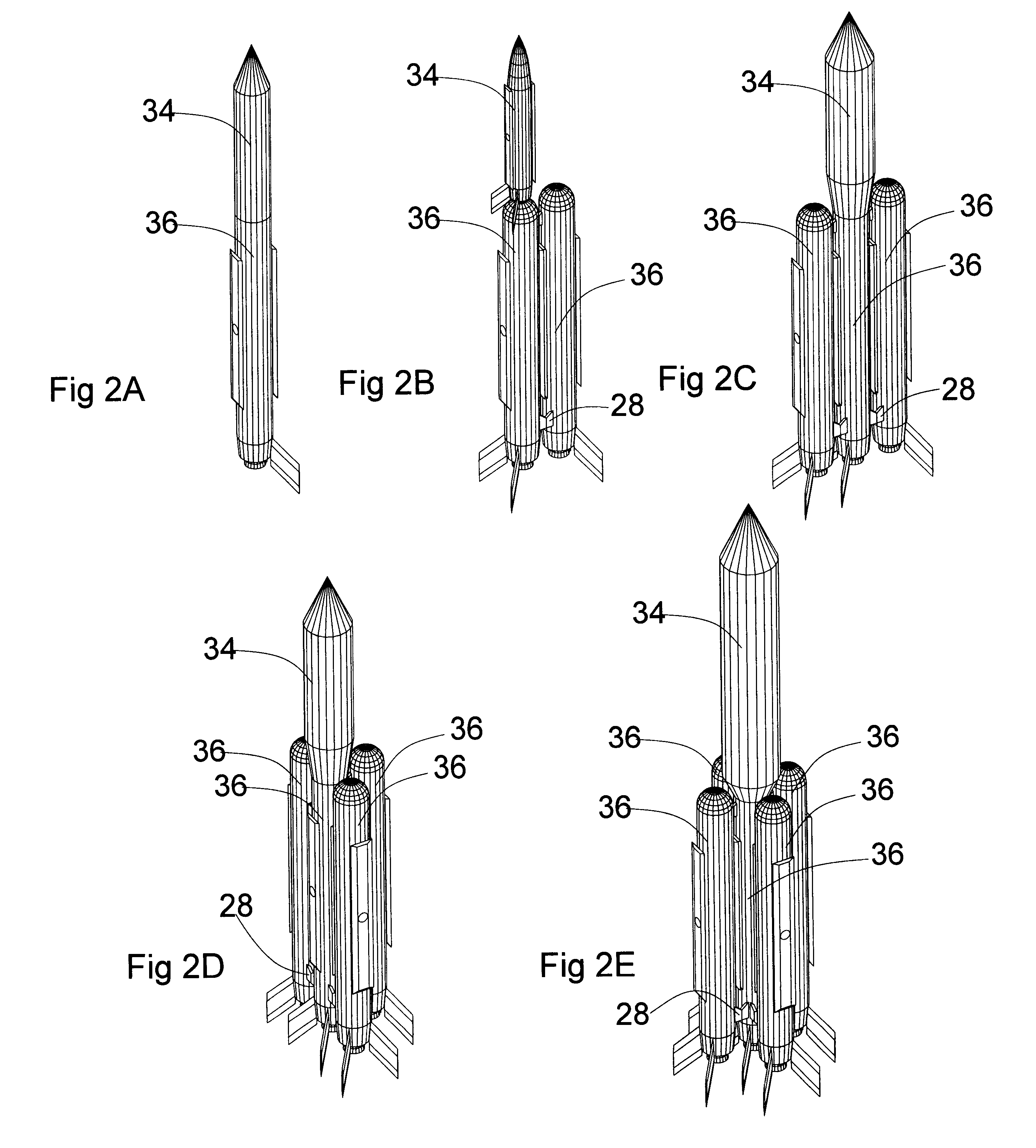Spacecraft and aerospace plane having scissors wings
a technology of scissors and aerospace planes, applied in the field of spacecraft and aerospace planes, can solve the problems of increasing the structural weight of the wings, limiting the flexibility of forming different launch configurations, and increasing the weight of the boosters
- Summary
- Abstract
- Description
- Claims
- Application Information
AI Technical Summary
Benefits of technology
Problems solved by technology
Method used
Image
Examples
Embodiment Construction
Fly Back Booster
FIG. 1A to FIG. 2E show the preferred embodiment of a fly back booster based on the invention. FIG. 1A to FIG. 1C indicate how a fly back booster works, and FIG. 2A to FIG. 2E indicate how one or more fly back boosters form different launch configurations.
In FIG. 1A, a fly back booster is at vertical position and ready to launch payload either by installing upper stage(s) and payload on it or connecting it with other fly back boosters and / or other vehicle(s) to form different launch configurations for launch systems. As shown in the figure, it has two main wings, upper main wing 24 is rotatably mounted on the back of its fuselage 22 and lower main wing 26 is rotatably mounted at the belly of its fuselage 22. Both of the main wings are yawed to be generally parallel with the longitudinal axis of fuselage 22 so that the fuselage can get close to other fly back boosters and / or other vehicles from many directions and get connected with them. Two control surfaces 30 are i...
PUM
 Login to View More
Login to View More Abstract
Description
Claims
Application Information
 Login to View More
Login to View More - R&D
- Intellectual Property
- Life Sciences
- Materials
- Tech Scout
- Unparalleled Data Quality
- Higher Quality Content
- 60% Fewer Hallucinations
Browse by: Latest US Patents, China's latest patents, Technical Efficacy Thesaurus, Application Domain, Technology Topic, Popular Technical Reports.
© 2025 PatSnap. All rights reserved.Legal|Privacy policy|Modern Slavery Act Transparency Statement|Sitemap|About US| Contact US: help@patsnap.com



